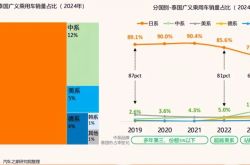Is Implementing a "Rail-Bound" Approach Feasible for Autonomous Driving?
![]() 11/03 2025
11/03 2025
![]() 386
386
In a recent discussion with colleagues, an intriguing question surfaced: Can autonomous driving be effectively implemented through a "rail-bound" approach? The "rail-bound" concept entails creating exclusive, standardized physical or virtual pathways for autonomous vehicles, enabling them to operate within controlled yet efficient corridors. This strategy aims to simplify complex urban traffic challenges by confining them to designated channels that integrate energy supply, scheduling, and operational systems. Theoretically, this approach could simultaneously boost efficiency and safety. Yet, the critical question remains: Can this vision be realistically executed on a large scale?
What Exactly Is the Rail-Bound Approach?
The "rail-bound" approach for autonomous driving can be realized through multiple methods. The most radical form involves physical rails, akin to trams or light rail systems, where dedicated tracks are constructed for vehicles. These vehicles draw power through wheel-rail contact or overhead catenaries, maintaining precise positioning. In this scenario, the vehicle functions primarily as a mobile carrier for passengers or cargo. A less extreme approach involves modifying road surfaces and infrastructure, such as installing inductive charging coils, sensor lines, or embedded energy transmission devices, enabling dynamic charging for vehicles traveling on specific corridors. A more lightweight option is the implementation of "virtual rails," which digitally designate certain roads as exclusive lanes for autonomous vehicles using high-definition maps, roadside positioning base stations, vehicle-to-everything (V2X) communication, and strictly enforced traffic rules—all without physical alterations to the road surface or vehicles. Hybrid models also exist, such as partial physical modifications on high-demand urban arteries or logistics corridors, combined with virtualization and standardized protocols elsewhere to achieve similar outcomes.
Regardless of the specific implementation, the overarching goal remains consistent: to enhance predictability, reduce perceptual ambiguities, improve energy efficiency, and minimize the complexity and redundancy of the vehicles themselves. Theoretically, the rail-bound approach transforms autonomous driving from an "open-world" challenge into a "constrained-world" problem, where many uncertainties can be mitigated through engineering solutions.
What Are the Technological Strengths and Limitations?
Undoubtedly, the constrained pathways of the "rail-bound" approach significantly reduce the complexity of perception and decision-making in autonomous driving. One of the core challenges in autonomous driving is achieving long-term, reliable environmental understanding. When vehicles operate within predefined, standardized corridors, where road edges, lane markings, traffic infrastructure, and behavioral patterns are highly consistent, the generalization requirements for perception models decrease, and anomalies become easier to detect and manage. Overhead catenaries or inductive power supply enable "charging while driving," theoretically allowing vehicles to carry smaller batteries, thereby reducing weight, lowering costs, and improving range and payload efficiency. Exclusive corridors also facilitate precise vehicle orchestration, enabling platooning or even grouped operations, further reducing energy consumption and enhancing traffic flow.
However, translating these technological advantages into large-scale real-world deployment comes at a substantial cost. Overhead catenaries require significant upfront investment, frequent maintenance, and occupy road space. Inductive charging faces engineering challenges related to energy transfer efficiency, device longevity, and adaptability to adverse weather conditions or road damage. Power density and charging efficiency directly determine whether vehicles can genuinely reduce battery size. If efficiency is low or charging is frequently interrupted, vehicles relying on ground-based power supply lose their competitive edge in real-world operations.
Another critical factor is the reliance on positioning and communication. Rail-bound systems typically demand centimeter-level or even higher precision positioning and real-time, reliable vehicle-to-infrastructure communication. This necessitates widespread deployment of high-precision base stations, the construction of low-latency, controllable networks, and seamless data interoperability across different operators. Any single point of failure or communication disruption could jeopardize operational safety, escalating risks from "individual vehicle failures" to "system-wide failures." When roadside infrastructure malfunctions, the impact is often far more extensive than isolated vehicle failures.
The rail-bound approach does not entirely eliminate the complexity of autonomous driving systems. While constrained environments reduce the diversity of perceptual inputs and behavioral models, they may impose even stricter requirements for redundancy design, fault response, and anomaly handling, as system operators must ensure uniform reliability across thousands of vehicles and roadside devices. Additionally, human-vehicle interactions, unforeseen events (e.g., obstacles, natural disasters, road construction), and mixed traffic scenarios (where rail-bound vehicles coexist with traditional vehicles, pedestrians, and non-standard transportation modes) continue to generate numerous edge cases.
What Are the Real-World Challenges Beyond Technology?
The feasibility of a technology often hinges on factors beyond its technical merits. The rail-bound approach involves urban planning, fiscal investment, long-term maintenance, regulatory revisions, operational models, and stakeholder alignment. Designating urban roads as "exclusive" corridors means occupying public space, potentially requiring relocations or reducing private vehicle lanes, which raises social acceptance concerns. Construction costs extend beyond initial installation to include long-term power supply, maintenance, upgrades, and depreciation of roadside equipment.
To fully leverage the advantages of the rail-bound approach, extensive data sharing is essential. Roadside sensing, traffic scheduling, and vehicle status data must be coordinated among various entities. However, many automakers are highly cautious about sharing proprietary data due to competitive, privacy, and regulatory concerns. Furthermore, friction exists in profit distribution among urban traffic managers, public transit operators, and private logistics firms. Establishing a neutral, sustainable business model to cover infrastructure and operational costs remains a complex challenge.
Implementing the rail-bound approach for autonomous driving also requires regulatory frameworks and standards. A unified set of cross-manufacturer, cross-operator operational norms, interface standards, and emergency protocols must be established in advance; otherwise, determining liability in accidents becomes difficult. Real-world traffic governance typically evolves incrementally, making it challenging to overhaul existing road usage rules rapidly. Thus, large-scale transformation of urban roads into exclusive corridors demands not only technological and financial readiness but also long-term, robust policy design and social engagement.
Why Is "Single-Vehicle Intelligence" More Practical?
The current market and technological trends favoring "single-vehicle intelligence" are no coincidence. Automakers invest heavily in sensors, computing power, and software to achieve higher levels of automation within existing road networks. The advantage of single-vehicle intelligence lies in its flexible deployment, enabling gradual evolution through software updates on existing roads while aligning with automakers' commercial motives of selling vehicles, software, and services. Data, regarded as a core asset by automakers, is primarily used to train models and enhance user experiences rather than being shared freely with public infrastructure operators.
Moreover, the implementation path for single-vehicle intelligence is more mature. Perception, localization, decision-making, and redundancy safety designs can be accomplished within the vehicle, reducing reliance on roadside infrastructure. Even in cities without fully developed vehicle-to-infrastructure connectivity, single-vehicle intelligence can achieve acceptable safety levels through enhanced perception and more cautious decision-making. For automakers, this approach allows them to retain technological and data sovereignty.

Image sourced from the internet
However, the rail-bound approach and single-vehicle intelligence are not entirely mutually exclusive. In specific scenarios, the rail-bound approach is both feasible and beneficial. For instance, in urban bus rapid transit lines, airport shuttles, closed logistics parks, or port internal transport, where traffic flow is concentrated and controllable, constructing dedicated corridors with integrated power supply and scheduling systems is economically viable. Similarly, on fixed freight corridors along highways, rail-bound-style express lanes could yield efficiency gains. The rail-bound approach functions more as a scenario-specific strategy rather than a universal solution for entire urban traffic systems.
Final Thoughts
The vision of "rail-bound" autonomous driving is undeniably appealing, offering controlled passage, lower energy consumption, and easier implementation of high-frequency platooning—a utopian goal in autonomous driving development. However, in reality, challenges related to cost, governance, and existing industrial ecosystems cannot be overlooked. Currently, the development path of single-vehicle intelligence aligns more closely with market incentives and technological evolution. It avoids the need to overhaul existing urban roads, instead leveraging advancements in computing power and perception technologies to enhance safety and efficiency within current infrastructure.
-- END --








